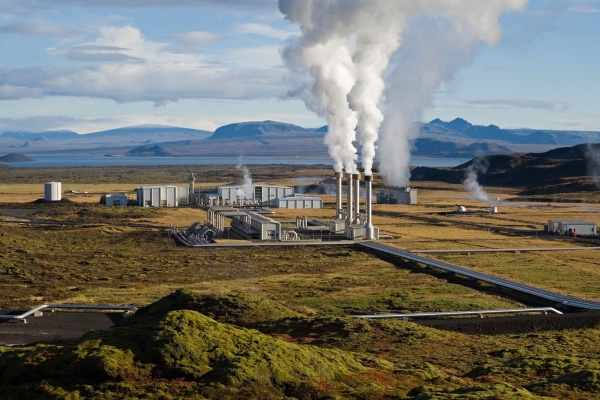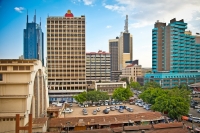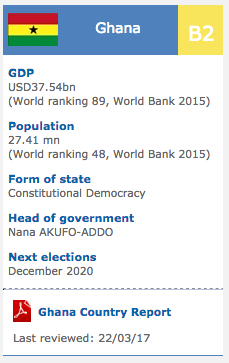Kenya: Kenya moves to harness geothermal potential
2014/09/14

In a move to tap into its vast geothermal energy resources, Kenya recently invited bids for the construction of two new power plants, representing an extra step forward in its 2017 target to boost electricity production by 5000MW.
The new plants, with a capacity of 60MW, will be completed by the end of next year and form one of several projects to tap into the geothermal potential, which is estimated by government bodies to be as much as 10,000MW.
Moving to expand
Kenya is trying to diversify its energy sources to become less dependent on hydroelectricity power and drive industrial development. According to a Ministry of Energy 2013-2016 investment prospectus, Kenya’s geothermal generation makes up just under 250MW of the total electricity production of roughly 1650MW. Hydroelectric comprises the major proportion of generation, at around 800MW, followed by thermal at around 600MW.
However, with suppressed request peaking at levels of 1400MW, according to the ministry – and unsuppressed request estimate to reach up to 1700MW – the need to expand and diversify the power base load is clear.
Lower than expected rainfall in 2013 and 2014 has added to the urgency, reducing the output of Kenya’s hydropower stations. Masinga reservoir, which feeds Kenya’s major hydroelectric facility, the 550MW Seven Forks, was at only one-third capacity by mid-2014. This prompted the country to slow exports to neighbouring nations and increase electricity imports.
Heating up
Kenya is one of a handful of African nations, inclunding Ethiopia and Zambia, which is exploring geothermal potential. The discovery of Kenya’s geothermal energy resources dates back to the 1950s, at the same time as the initial test wells were drilled at Olkaria, near Nairobi. Kenya completed its initial geothermal power plant, a 15MW facility, in 1981 at the same location. Since again, Kenya has as well turned to private producers, with IPPs such as US-based Ormat Technologies 50MW plant in Olkaria contributing to geothermal production.
Kenya’s Rift Valley is the major geothermal zone. Part the major well clusters are Menengai and Baringo, which have potential capacities of 1,600 MW and 800 MW, respectively. According to the government’s second Medium Term Plan – an action plan for the broader development strategy ‘Vision 2030’ – 620 geothermal wells will be drilled and developed. Kenya’s 10-year plan will come at a collective cost of some $2.6bn.
The government created the Geothermal Development Company (GDC) in 2006, following the passage of a new Energy Act. The national-owned operator is responsible for upstream exploration, inclunding drilling and surveying, inclunding sourcing steam for power producers. The National Treasury allocated KES12.5bn ($142m) in the budget for the fiscal year ending June 2014 to GDC to develop and drill for steam. GDC has as well secured $120m from the African Development Bank and a $25m grant from Nairobi’s Scaling-up Renewable Energy Programme for the Menengai geothermal project, which is designed to produce electricity for 500,000 households.
Construction on a number of facilities is by presently underway. Expansion of Ormat’s plant at Olkaria, located in the Great Rift Valley, is ongoing while tenders for the initial phase of the plant in Menengai – with the potential to provide as much as 400MW at the same time as completed – have been awarded to three firms, according to local press reports. The firms, which include Ormat, along with Finland’s Quantum and local firm Sosian Energy, were selected late last year, and will reportedly construct a 35MW steam plant under a build-own-operate model, at a cost of KES4bn ($45m) each. The plants are expected to be running by the end of 2015.
Finding the funding
Foreign lenders have as well begun throwing their weight behind Kenya’s geothermal projects. The German Development Bank recently extended $113m in loans for the drilling and appraisal of geothermal wells in the initial phase of the Bogoria-Silali project in the Rift Valley according to the GDC. This follows a $100 injection last year. The World Bank has invested over $400m in supporting geothermal energy production in Kenya while America’s Export-Import Bank (Exim Bank) extended a soft loan of $300m last year.
- Related Articles

Top 10 Most Attractive Investment Destinations In Africa
2017/08/20 Africa’s feverish increase has decelerated in recent years and a lot of nations have buckled under the pressure of falling resource prices, security disruptions, fiscal imprudence and adverse weather conditions.
Africa's Relationship With China Is Ancient History
2017/07/02 In 2002 South Africa's Parliament unveiled a digital reproduction of a map - of China, the Middle East and Africa - that some speculated could be the initial map of the African continent. The Da Ming Hun Yi Tu - the Comprehensive Map of the Great Ming Empire - was drawn up around 1389 during the Ming Dynasty, according to historian Hyunhee Park.
Africa: Making Things Happen at the Bank - 'Not a Talk Shop' - Akin Adesina
2017/07/02 Dr. Akinwumi Adesina is focusing on five areas to achieve the African and world goals for a prosperous continent since becoming president of the African Development Bank - Africa's major public financial institution in September 2015. He was a keynote speaker at this month's Corporate Council on Africa's U.S.- Africa Business Summit in Washington D.C. and moderated a lively panel with five African government ministers. He as well received the Gene White Lifetime Succcess Award from the World Child Nutrition Foundation. This week, he was named the 2017 recipient of the World Food Prize, a prestigious honor that includes a $250,000 award. In an interview in Washington, DC, Adesina discussed the Development Bank's ambitious schedule and his vision for attracting the increase capital Africa needs. Posting questions for AllAfrica was Noluthando Crockett-Ntonga.
Kenya Economic Overview - A Positive General Overview
2017/05/31 Kenya Large twin deficits but strong GDP growth trajectory
Climate change laws around the world
2017/05/14 There has been a 20-fold increase in the number of global climate change laws since 1997, according to the most comprehensive database of relevant policy and legislation. The database, produced by the Grantham Research Institute on Climate Change and the Environment and the Sabin Center on Climate Change Law, includes more than 1,200 relevant policies across 164 countries, which account for 95% of global greenhouse gas emissions.
- Kenya News
-
- UNITED STATES: Kenya Airways Gets Permit For Direct U.S. Flights
- KENYA: Kenya, Nigeria & S. Africa: biggest winners of Google's Africa tech training
- AFGHANISTAN: UNWTO: International tourism – strongest half-year results since 2010
- BOTSWANA: Why governments need to support the financial sector to meet the unserved needs of smallholder farmers
- BOTSWANA: International Arrivals To Africa Reach More Than 18 Million In 2017
- KENYA: Kenya poll rerun: Uhuru on campaign trail, Raila seeks campaign funding
- Trending Articles
-
- SOUTH AFRICA: Nigeria and South Africa emerge from recession
- BAHRAIN: Aluminium Bahrain’s Line 6 Expansion Achieves 25 Percent Completion
- CHINA: Chinese-supported infrastructure projects change Zambia's landscape
- NIGERIA: The Security and Exchange Commission approves the 40th Annual General Meeting of Oando PLC
- UZBEKISTAN: Former deputy PM named Uzbekistan Airways head
- EUROPE: Ball Corporation Debuts Three New Aluminium Beverage Can Sizes











